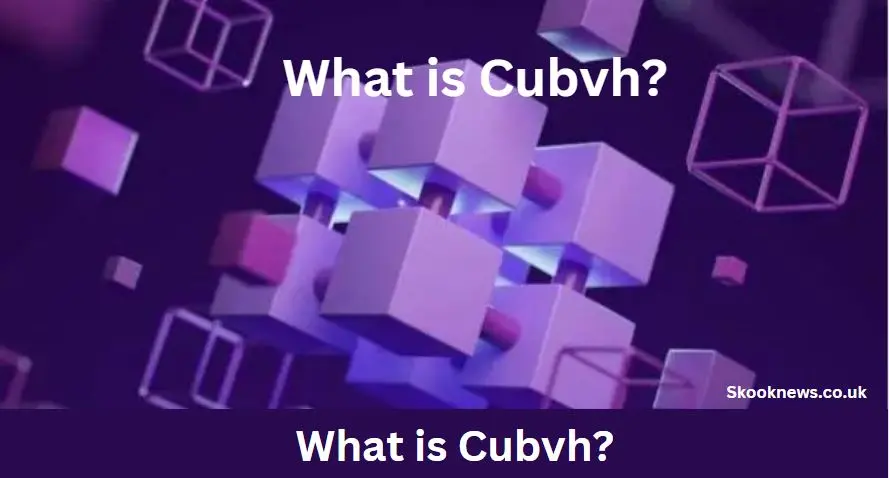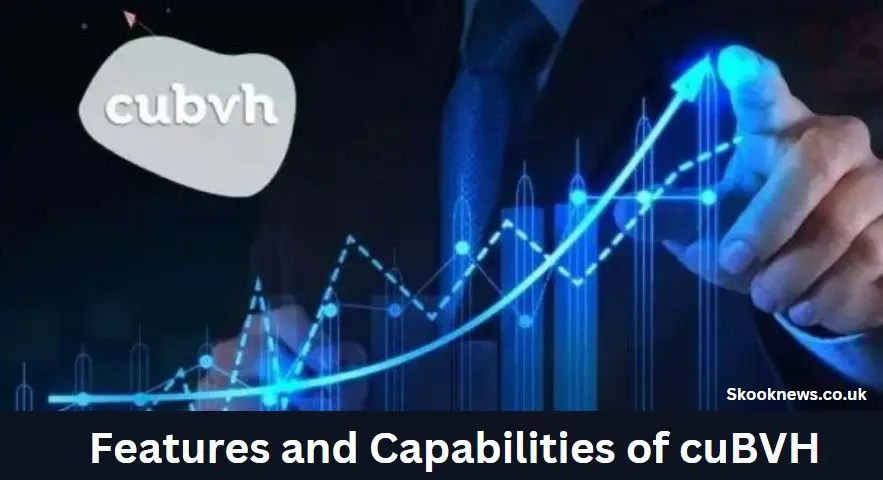Cubvh is a cutting-edge platform that revolutionizes digital marketing strategies through advanced data analytics and automation. By harnessing the power of artificial intelligence, Cubvh provides businesses with actionable insights and precise targeting, ensuring that marketing efforts are efficient and effective. The platform’s user-friendly interface allows seamless integration with existing systems, making it accessible for companies of all sizes.
With real-time reporting, predictive analytics, and customized campaign management, Cubvh empowers businesses to stay ahead of market trends and optimize their outreach. Cubvh offers the tools to enhance your digital presence, maximize ROI, and achieve sustainable growth in an increasingly competitive landscape, whether you’re a small startup or a large enterprise.
What is Cubvh?

cuBVH, or CUDA Bounding Volume Hierarchy, is an advanced tool designed to accelerate ray tracing and collision detection processes, vital for rendering realistic graphics in real-time applications. Utilizing CUDA (Compute Unified Device Architecture), cuBVH efficiently organizes 3D objects into a hierarchical structure, enhancing the speed and efficiency of complex computations.
Purpose of cuBVH:
The main goal of cuBVH is to optimize the rendering workflow. Ray tracing, a method for simulating light interactions with objects, can be resource-intensive and slow. cuBVH improves this process by structuring objects to reduce the number of calculations needed, resulting in quicker rendering times and more effective collision detection.
Importance of cuBVH:
cuBVH is crucial for achieving high-fidelity graphics and optimized computational performance. Its ability to expedite ray tracing and collision detection makes it an invaluable asset in various fields, including gaming, augmented reality, and architectural visualization. Mastering cuBVH provides a competitive advantage in graphics development, offering improved performance and efficiency.
Read more: The Divorcées Dessert Cafe Dream
Understanding Bounding Volume Hierarchies (BVH)
Bounding Volume Hierarchy (BVH) is a data structure widely used in computer graphics to enhance the efficiency of rendering and collision detection. It organizes objects within a scene by dividing the 3D space into a hierarchy of bounding volumes. Each volume encompasses a subset of objects, enabling the system to quickly cull large portions of the scene that don’t require detailed processing.
Role of BVH in Computer Graphics:
In computer graphics, BVH is pivotal for optimizing rendering performance. By structuring objects into hierarchical bounding volumes, BVH reduces the computations needed for tasks like ray tracing. This approach accelerates rendering times and improves computational efficiency, making it especially valuable for scenes with numerous objects. BVH helps the system concentrate on relevant scene parts, streamlining the rendering process.
How BVH Organizes 3D Objects:
BVH organizes 3D objects by segmenting the space into a hierarchy of bounding volumes. Each volume includes a subset of objects, and the hierarchical structure enables quick identification of which volumes require detailed computation. This efficient organization minimizes unnecessary calculations, leading to faster and more resource-efficient rendering.
Features and Capabilities of cuBVH

Features and Capabilities of cuBVH
- Enhanced Performance:cuBVH leverages CUDA’s parallel processing capabilities to significantly speed up ray tracing and collision detection. Distributing computations across multiple GPU cores reduces processing time and increases efficiency.
- Hierarchical Structure: It organizes 3D objects into a hierarchical bounding volume structure, allowing for quick elimination of non-relevant objects during calculations. This hierarchical approach minimizes the computations needed for rendering and collision detection.
- Real-Time Rendering:cuBVH is designed to facilitate real-time rendering applications. Its ability to rapidly process and update complex scenes makes it ideal for interactive graphics in gaming, virtual reality, and augmented reality.
- Efficient Memory Usage: The tool optimizes memory management by organizing data to minimize overhead and maximize the effective use of GPU memory. This ensures smooth Performance even with large datasets.
- Scalability:cuBVH is scalable and adaptable to various levels of complexity, from simple scenes to highly detailed environments. It efficiently handles increasing numbers of objects and more complex hierarchical structures.
- Versatility: Beyond ray tracing and collision detection, cuBVH can be applied to other computational tasks that benefit from hierarchical spatial organization, such as physics simulations and advanced rendering techniques.
- Integration with CUDA: Fully compatible with CUDA, cuBVH integrates seamlessly with other CUDA-based applications and frameworks, enabling developers to leverage existing infrastructure and tools.
- Customizability: The tool offers options for customization and optimization based on specific application needs, allowing developers to tailor its functionality to suit various scenarios and performance requirements.
- Realistic Graphics: By accelerating the computations involved in rendering, cuBVH helps achieve high-quality, realistic graphics, enhancing visual fidelity and immersion in digital environments.
Applications and Impact
Gaming:
In the gaming industry, cuBVH is a transformative technology. Accelerating ray tracing and collision detection ensures that games perform smoothly and deliver visually stunning experiences. Players benefit from enhanced real-time lighting effects, accurate shadows, and richly detailed environments, all contributing to a more immersive gaming experience.
Augmented Reality:
In augmented reality (AR) applications, cuBVH is crucial for precise rendering and collision detection. It facilitates rapid and efficient computations, ensuring virtual objects interact seamlessly with the real world. This leads to more engaging and lifelike AR experiences, enhancing AR applications’ overall quality and realism.
Interior Design and Architecture:
For interior design and architecture, cuBVH enables the creation of highly realistic and detailed visualizations. Its advanced ray tracing capabilities provide accurate lighting and shadow effects, allowing clients to see a true-to-life representation of their spaces. This enhances decision-making and aids in project planning, offering valuable insights and a clearer outcome vision.
Acknowledgments and Credits
cuBVH is the product of collaborative efforts from a dedicated community of developers and researchers. Special thanks go to all the contributors who have made this powerful tool accessible to the graphics community. Their collective expertise and commitment have been crucial in developing and enhancing cuBVH, reflecting the shared passion and dedication that have shaped this remarkable tool. Recognizing their contributions underscores the importance of teamwork and innovation in advancing technology.
Frequently Asked Questions
What is cuBVH?
cuBVH stands for CUDA Bounding Volume Hierarchy. It is a tool designed to accelerate ray tracing and collision detection by efficiently organizing 3D objects into a hierarchical structure using CUDA (Compute Unified Device Architecture).
How does cuBVH improve performance?
cuBVH enhances performance by utilizing CUDA’s parallel processing capabilities. It organizes objects into a hierarchical structure, reducing the number of calculations needed for ray tracing and collision detection, which results in faster rendering times and improved efficiency.
What are the main applications of cuBVH?
cuBVH is primarily used in gaming, augmented reality (AR), interior design, and architecture. It helps create high-fidelity graphics, improve real-time rendering, and generate realistic visualizations with accurate lighting and shadows.
Can cuBVH be used in real-time applications?
Yes, cuBVH is designed to support real-time applications. Its ability to accelerate computations allows for smooth and interactive experiences in gaming, AR, and other real-time graphics applications.
What are the benefits of using cuBVH for ray tracing?
cuBVH optimizes ray tracing by organizing 3D objects into a hierarchical structure. This reduces the number of rays that need to be tested against objects, resulting in faster ray tracing performance and more realistic rendering of lighting and shadows.
How does cuBVH handle large scenes with many objects?
cuBVH efficiently manages large scenes by organizing objects into hierarchical bounding volumes. This approach allows the system to quickly cull non-relevant parts of the scene, making it feasible to handle and render complex environments with many objects.
Is cuBVH compatible with other CUDA-based tools?
Yes, cuBVH is fully compatible with other CUDA-based tools and frameworks. This integration allows developers to leverage existing CUDA infrastructure and tools, enhancing cuBVH’s flexibility and utility in various applications.
What kind of hardware is required to use cuBVH?
To utilize cuBVH effectively, you need a GPU that supports CUDA. This includes a range of NVIDIA graphics cards compatible with CUDA technology, as cuBVH relies on GPU acceleration to achieve its performance benefits.
Conclusion
cuBVH is a groundbreaking tool poised to transform graphics development. By accelerating ray tracing and collision detection, cuBVH facilitates the creation of high-fidelity graphics in real-time applications. Whether you’re a developer, a graphics enthusiast, or a tech innovator, leveraging cuBVH can significantly enhance your projects.
cuBVH excels due to its advanced features, optimized computations, and diverse applications. Its impact on gaming, augmented reality, and interior design is substantial. We encourage you to explore cuBVH further to experience firsthand how it can elevate your graphics development process and unlock new possibilities.

